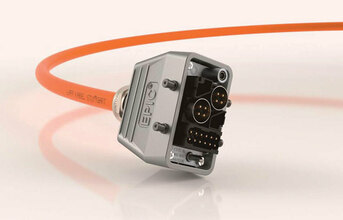
However, sustainability means more flexibility above all else. If a robot is retrofitted with a camera for quality inspection, the connector of this expansion should also be easily realised. Modular rectangular connectors are available for such cases, including the easily expandable EPIC MH connector system from Lapp. It can be flexibly equipped for cables that fulfil the widest variety of functions and can accommodate all kinds of connector modules for power, signals and data. If a new function is added, an additional module can be easily implemented or a different one replaced. This is particularly beneficial to sectors which are industrialising on a large scale, such as the food industry.
Demographic change: The world's population is growing rapidly, but arable land is limited. If mankind is to be fed, then highly productive, increasingly industrialised food production is the only answer. At the same time, consumers demand food that can be prepared more conveniently and that is packaged in smaller portions, as the trend towards households with fewer occupants persists in highly advanced, industrialised countries. In production, this means that food is industrially processed and packed by machine. This requires a wide range of sensors and drive systems - and therefore also cables and connectors to transmit data and convey power. It goes without saying that these also have to withstand frequent cleaning with aggressive detergents, as the requirements for hygiene are also continuing to multiply. For connectors, this means fulfilling ever more stringent requirements in terms of robustness. One consequence is that more and more technology from other branches of industry is being introduced in the production and processing of food. Wherever possible, end users then opt for industry standards from other sectors. For connectors, however, there is likewise a trend towards custom solutions if standard ones will no longer do the job. In this case, there is a need for the manufacturer to provide intensive consultation and support in engineering.
"The next few years will bring about many changes in industry - I believe we are prepared for these and that we will be able to provide our customers with the support they need," says Guserle optimistically.
Source: Lapp
END


























